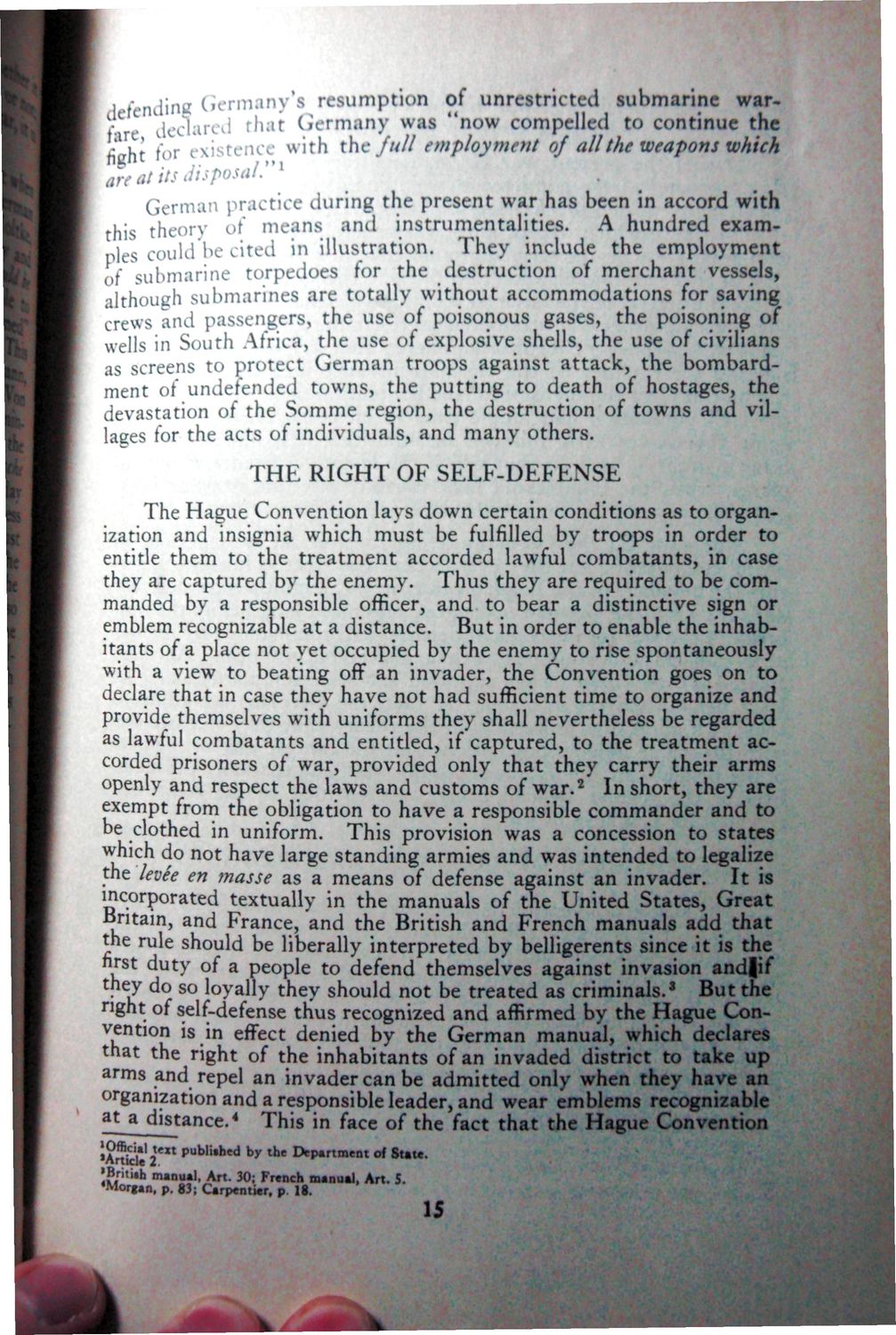| |
| |
Caption: War Publications - WWI Compilation 1923 - Article 14
This is a reduced-resolution page image for fast online browsing.

EXTRACTED TEXT FROM PAGE:
I fending (iermany'l resumption of unrestricted submarine ware C f. declared that Germany was "now compelled to continue the riht for existence with the full employment of all the weapons which % art §t Us disposal" German practice during the present war has been in accord with this theory of means and instrumentalities. A hundred examples could "be eited in illustration. They include the employment of submarine torpedoes for the destruction of merchant vessels, although submarines are totally without accommodations for saving crews and passengers, the use of poisonous gases, the poisoning of wells in South Africa, the use of explosive shells, the use of civilians as screens to protect German troops against attack, the bombardment of undefended towns, the putting to death of hostages, the devastation of the Somme region, the destruction of towns and villages for the acts of individuals, and many others. T H E R I G H T OF SELF-DEFENSE The Hague Convention lays down certain conditions as to organization and insignia which must be fulfilled by troops in order to entitle them to the treatment accorded lawful combatants, in case they are captured by the enemy. Thus they are required to be commanded by a responsible officer, and to bear a distinctive sign or emblem recognizable at a distance. But in order to enable the inhabitants of a place not yet occupied by the enemy to rise spontaneously with a view to beating off an invader, the Convention goes on to declare that in case they have not had sufficient time to organize and provide themselves with uniforms they shall nevertheless be regarded as lawful combatants and entitled, if captured, to the treatment accorded prisoners of war, provided only that they carry their arms 2 openly and respect the laws and customs of war. In short, they are exempt from the obligation to have a responsible commander and to be clothed in uniform. This provision was a concession to states which do not have large standing armies and was intended to legalize the levee en masse as a means of defense against an invader. It is incorporated textually in the manuals of the United States, Great Britain, and France, and the British and French manuals add that the rule should be liberally interpreted by belligerents since it is the nrst duty of a people to defend themselves against invasion and|if 1 they do so loyally they should not be treated as criminals. But the right of self-defense thus recognized and affirmed by the Hague Convention is in effect denied by the German manual, which declares that the right of the inhabitants of an invaded district to take up arms and repel an invader can be admitted only when they have an organization and a responsible leader, and wear emblems recognizable 4 at a distance. This in face of the fact that the Hague Convention 'Artie'** 2*** D w t m e n t of State. •Britiih manual, Art. 30; French manual, Art. 5. •Morgan, p. 83; Carpentier, p. 18. publi,hcd by the 15
| |